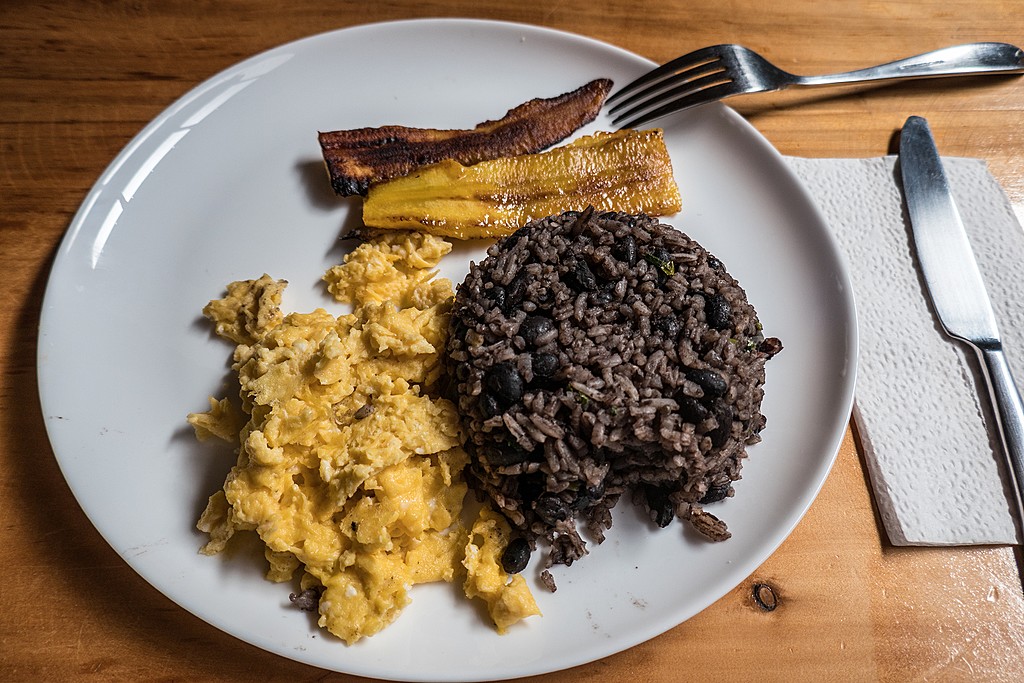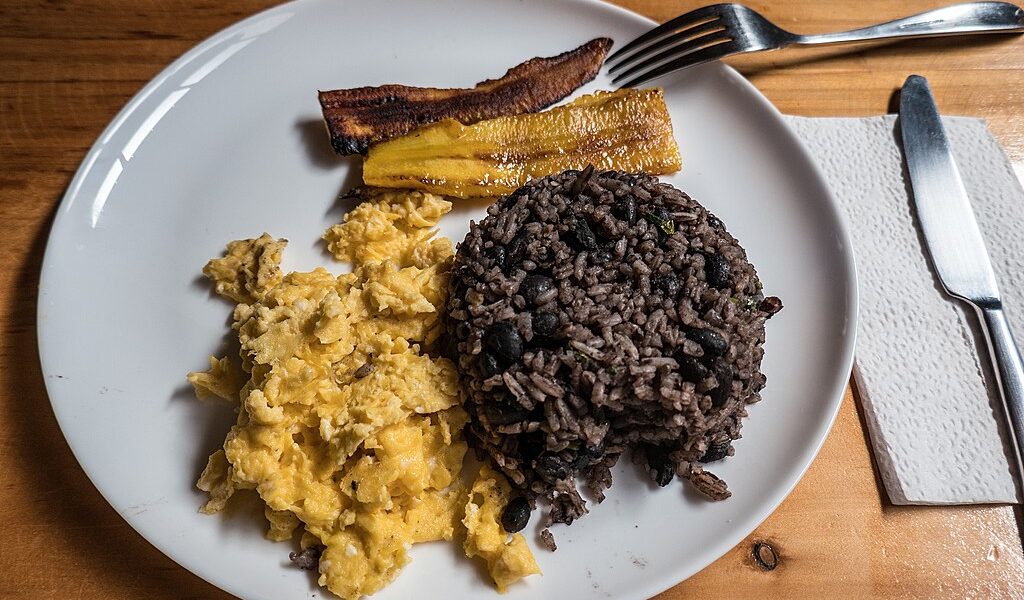
Costa Rica has a culinary tradition all its own, and travelers in search of local experiences need look no further than the food. Read on for an overview of must-try delicacies, including the country’s national dish, snow cones with a Costa Rican twist, and other fun specialties best tried in-country.
Costa Rican landscapes offer far more than just visually appealing scenery; they represent the very foundation for a thriving agricultural industry, yielding a diverse array of products that range from the zesty tang of citrus fruits to the rich, aromatic allure of coffee beans and the succulent freshness of locally caught fish. If you consider yourself a devotee of local and organic produce and culinary experiences, then prepare to be utterly captivated by what Costa Rica has to offer. The commitment to fresh, locally sourced ingredients is deeply ingrained in the country’s culinary identity.
But what exactly defines Costa Rican cuisine? It’s a question that delves into the heart of the nation’s culture and traditions. In essence, it is functional and down-to-earth, deeply rooted in the practicalities of daily life, yet simultaneously rich and diverse, reflecting the country’s varied ecosystems and cultural influences. Simple, wholesome ingredients form the cornerstones of the local diet, with rice and black beans taking center stage as staples that appear on tables across the country. The vibrant bounty of fresh fruits and the satisfying starchiness of plantains further contribute to the foundation of Costa Rican cooking. Prepare yourself for an unforgettable gastronomic journey as we explore the culinary experiences in Costa Rica that you absolutely don’t want to miss. From traditional breakfasts that energize the body and soul to irresistible sweets that tantalize the taste buds, and from authentic street food that pulsates with local flavor to satisfying bar snacks that perfectly complement a night out, Costa Rica offers a culinary adventure for every palate.
## Humble and Hearty Gallo Pinto
(Image of Gallo Pinto)
Gallo pinto is Costa Rica’s national dish
It seems only fitting to commence this culinary exploration with Costa Rica’s undisputed national dish: *gallo pinto*, a savory and comforting combination of rice and black beans artfully seasoned with a blend of spices. The name itself, which translates to “spotted rooster,” carries with it a captivating tale of regional folklore and local tradition. The origin of this name is steeped in regional lore. The story goes that a farmer residing in a small town just outside of **San José** dedicated himself to meticulously fattening up his prized, spotted rooster. His intention was to proudly serve the bird to the town’s residents as a centerpiece of their Christmas feast. However, as the farmer soon realized, one rooster would simply not suffice to feed the entire community. Undeterred, he ingeniously created a hearty and flavorful side dish by expertly frying up some rice and beans. In its finished state, the dish bore a striking resemblance to his prized rooster, appearing speckled and mirroring the bird’s distinctive plumage.
However, the true history of the dish extends beyond local anecdotes and delves into the country’s Afro-Caribbean heritage. In reality, gallo pinto was inspired by the culinary traditions of Jamaican slaves, who creatively combined beans with rice as a readily available substitute for peas. This resourceful adaptation cemented gallo pinto’s place as an integral part of Costa Rica’s rich and diverse Afro-Caribbean heritage. Today, the dish is ubiquitous, served everywhere from humble roadside diners to upscale restaurants. Gallo pinto is most commonly enjoyed for breakfast, where it is typically accompanied by a selection of complementary dishes, including perfectly cooked eggs, sweet fried plantains, a dollop of a type of sour cream known as *natilla*, and a steaming cup of coffee. To savor gallo pinto like a true local, be sure to add a few drops of **Salsa Lizano**, a beloved Costa Rican condiment that boasts a flavor profile reminiscent of Worcestershire sauce. This simple addition elevates the dish, adding a distinctive tang that perfectly complements the savory flavors.
## The Versatile Cacao Bean
(Image of Cacao)
All things chocolaty derive from cacao
Every single one of the world’s rich, creamy, and decadent chocolate confections, from the most basic chocolate bar to the most elaborate gourmet truffle, can be traced back to a single, unassuming bean: *cacao*. This remarkable bean is the source of all things chocolate. (Grinding and roasting the beans is the very basis for cocoa powder.) The evergreen tree responsible for producing these precious cacao bean pods thrives throughout the lush landscapes of Latin America, with a particularly high concentration found in the fertile soils of Costa Rica.
Across the country, particularly on the southern Caribbean side, you’ll discover numerous working cacao plantations, each offering immersive tours that provide fascinating insights into the cultivation and processing of this remarkable bean. Also, you can find museums dedicated to this bean, such as the **Museo de Cacao** in **Cahuita**, where local indigenous residents demonstrate cacao processing. These tours provide visitors with the unique opportunity to witness firsthand the journey of the cacao bean from its humble beginnings to its transformation into the chocolate delights we all know and love. But you don’t have to limit yourself to refined cocoa products; you can also experience the raw, unadulterated flavors of the cacao fruit. Simply pop open a ripe cacao pod and savor the sweet and tangy fruit that surrounds the beans. This unique experience offers a glimpse into the authentic flavors of cacao, providing a newfound appreciation for this remarkable ingredient.
## Local Take On Ceviche
(Image of Ceviche)
Like Peruvian ceviche, ceviche tico is prepared by marinating fish in lemon juice
Native Costa Ricans, known colloquially as *ticos*, have skillfully adapted and refined a number of popular Latin American dishes, imbuing them with their own unique twists and regional flavors. One prime example of this culinary ingenuity is Costa Rica’s version of ceviche, lovingly referred to as *ceviche tico*. While sharing a common foundation with the more widely known Peruvian and Mexican ceviches, ceviche tico distinguishes itself through the careful selection and utilization of specific ingredients. For example, even though Costa Ricans often start with a standard formula for ceviche, involving the use of fresh seafood like shrimp and sea bass, meticulously diced with onions and marinated in the tangy zest of lemon juice, they elevate the dish with the inclusion of aromatic herbs like cilantro and parsley. Some recipes also call for the addition of bay leaves and a splash of white vinegar, further enhancing the complex flavor profile. The result is a dish that embodies the same clean and refreshing qualities that define Peruvian ceviche, yet it possesses a distinct and intriguing twist, making it a unique and unforgettable culinary experience.
## Chifrijo, the Ideal Bar Snack
(Image of Chifrijo)
Costa Rican chifrijo
Who says you can’t find elevated culinary experiences in the relaxed and convivial atmosphere of a local watering hole? Allow us to introduce you to *chifrijo*, one of Costa Rica’s most ubiquitous and beloved bar snacks. It’s a simple yet remarkably satisfying blend of textures and flavors, featuring a base of fluffy rice generously topped with tender black beans and succulent fried pork. The addition of a vibrant *pico de gallo* salsa, composed of fresh tomatoes, fragrant cilantro, and crisp onion, along with the accompanying crispy tortilla chips, lends the dish a distinctly Mexican-inspired feel. However, it’s widely believed that chifrijo was originally created in the **San José** area, making it a truly Costa Rican culinary creation. Despite its widespread popularity, ticos can be remarkably contentious about chifrijo’s actual provenance within the country, especially after they’ve indulged in a few beers. Nevertheless, one thing remains undeniably true: for a fortifying and delicious dish to kickstart a night of bar-hopping, chifrijo is an unparalleled choice.
## Regional Coffee Tasting
(Image of Coffee)
Costa Rica is now a popular stop on the global coffee trail
What is it about Costa Rica that allows it to produce such exceptional coffee beans? The answer lies in the unique combination of factors that converge in the country’s fertile highlands. In particular, the soil is volcanic, which imbues the coffee beans with a distinct smoky aroma and flavor profile. There are several major coffee-producing regions in the country, with dedicated growers located in provinces like **Puntarenas**, **Heredia**, **Alajuela**, and **San José**.
Coffee production has long been a tradition in Costa Rica, but with the rise of the third-wave coffee movement, it has evolved into a significant engine driving the country’s economy. Similar to the cacao industry, many coffee plantations throughout Costa Rica now offer guided tours of their properties. These tours typically include informative presentations on the intricacies of the harvesting and roasting processes, as well as ample opportunities to sample a variety of locally grown and roasted coffees. The unique opportunity to witness the entire coffee-making process firsthand, from the cultivation of the beans to the final brewing, is an experience that will undoubtedly deepen your appreciation for this globally cherished beverage.
## Exotic Fruits and Juices
(Image of Fruits)
Peach palm fruit and other exotic delicacies at an outdoor market
Much like its South American neighbors, Brazil and Colombia, Costa Rica boasts an astonishing abundance of fruits, many of which you may have never encountered before. The sheer variety and availability of produce are immediately apparent at food stalls and street vendors throughout the country. If you consider yourself an adventurous foodie who enjoys exploring local flavors and culinary traditions, then be sure to pull up a stool at one of Costa Rica’s many food vendors and sample a few *naturales* (fresh fruit juices). The options are almost limitless, ranging from the familiar to the extraordinarily exotic. Try a mango, watermelon, blackberry, or pineapple juice, or indulge your creativity by mixing and matching different fruits. Consider a refreshing papaya/cantaloupe hybrid.
Furthermore, you simply cannot leave Costa Rica without experiencing the simple pleasure of enjoying a *pipa* (coconut). Similar to many countries blessed with tropical climates, vendors commonly sell fresh coconuts from street carts. Your cue to approach is the distinctive call of a vendor shouting “Pipa, pipa!” Step up to the cart, and the vendor will hand you a chilled coconut, complete with a straw, providing the perfect refreshing beverage for a day at the beach or a stroll through town.
Some other must-try fruits in Costa Rica include the visually striking *carambola* (star fruit), *rambutan* (a distant cousin of the lychee, boasting delicious white fruit encased within a vibrant red skin), and peach palm fruit. This last one is often boiled and served mashed with honey, offering a taste reminiscent of a sweet potato. In addition to its unique flavor, peach palm fruit is also believed to offer a range of health benefits, including being good for the heart.
## Costa Rican Snow Cones
(Image of Snow Cones)
Costa Rica’s favorite frozen street snack
We’ve all encountered and enjoyed snow cones and shaved ice in various forms. Well, Costa Rica has its own distinctive version of this beloved frozen treat: the *copo* (the word literally translates to “flake”), which is sometimes referred to as *granizado*, depending on the specific region you’re in. Typically served from street carts, the copo provides a refreshing and welcome respite from the Central American heat. However, be forewarned: the copo is a substantial refreshment, not for the faint of heart. Not only is it generously flavored with *kola* (a sweet red syrup), but it’s also drizzled with sweetened condensed milk. Some vendors even go the extra mile, adding a scattering of marshmallows on top for good measure. Overall, the copo is one of Costa Rica’s most iconic and famous street foods, making it an absolute must-try during your travels.

